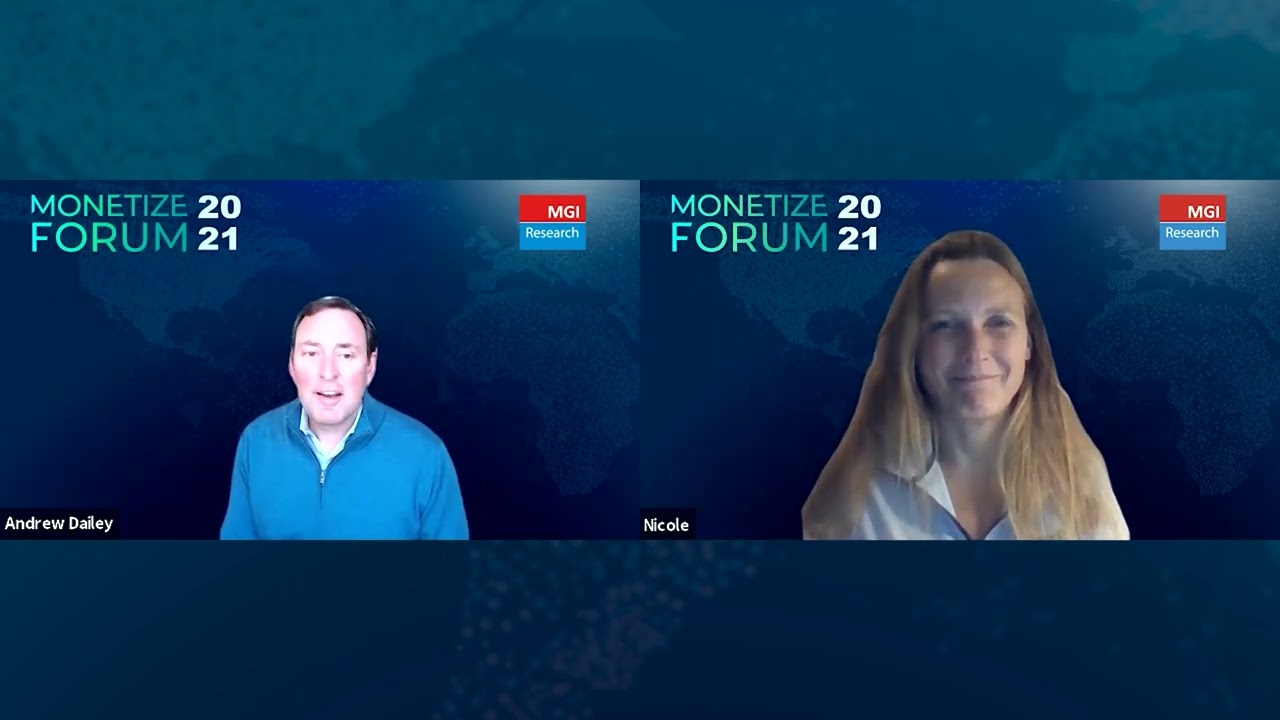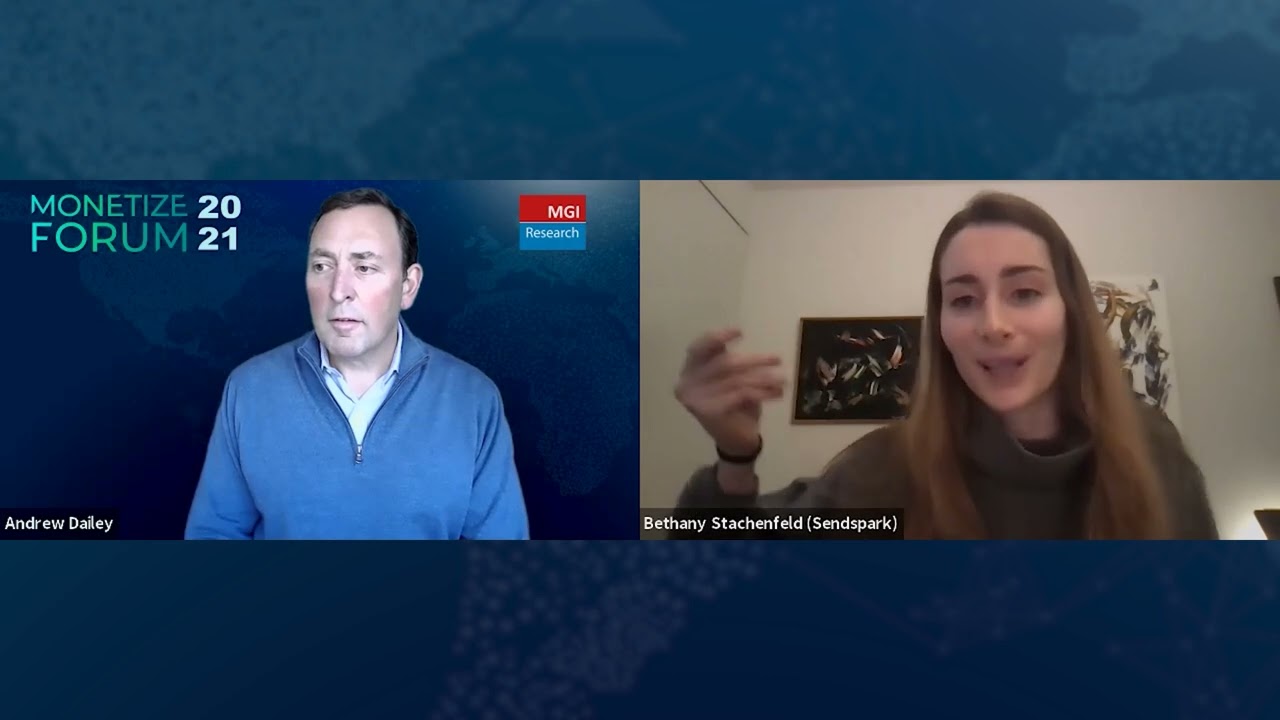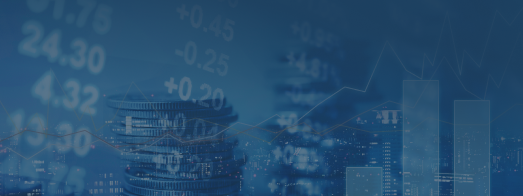
In recent years, we’ve seen a shift in how consumers and businesses expect to be shown value for money. Though subscription is a popular model, it falls short in this respect. Many if not all of us have experienced subscribing for a service we don’t make full use of, perhaps failing to read any of the New Yorkers piling up on the coffee table because we’ve also subscribed to Netflix. Over time, this leads to what LogiSense CEO Adam Howatson calls “subscription fatigue,” as customers see consistent, recurring charges for services they don’t want or need to the level of their allowance. We invited Adam to speak with MGI Research analyst Andrew Dailey at the 2021 Monetize Forum to tell us about what he sees as the solution: usage-based models. He explains how such models work and how LogiSense has benefitted from employing usage themselves—both in customer appreciation of transparency and in the rich data it provides for analysis.
Key Issues
How does the usage economy compare to subscription?
What refinements to usage billing solutions can we expect to see soon?
Which key considerations in adopting a usage model are often overlooked?
Guest Profile
Adam joined LogiSense as President and CEO in 2019 and also serves as a member of the Board and as Board Secretary. Previous positions include Chief Marketing Officer and SVP of OpenText, serving on the Board of Directors of the Information Technology Association of Canada and ScribbleLive, and practicum sponsor for the University of Waterloo MBET program in addition to other local technology and mentorship programs.
Andrew Dailey
Hi, this is Andrew Dailey of MGI Research, and welcome to our session “The Usage Economy: Company Case Study.” In 2015, at MGI Research’s Billing Innovators Summit in New York City, Flavio Gomes, a founder of the billing company LogiSense, walked on stage and described the usage economy. Today, six years later, usage and consumption-based models are gaining wider traction, and they’re one of the core themes that’s running through the 50-plus sessions we have here at the Monetize Forum. It’s one thing to discuss usage models in the abstract; it’s another to base your core business model upon them. Joining us now is the CEO who has made the decision to center his business on a usage-based model. Adam Howatson, CEO of LogiSense, welcome to the Monetize Forum.
Adam Howatson
Andrew, thank you for having me.
Andrew Dailey
So, let’s start by getting a sense of the size, scope, and scale of your business and how you actually came to be the CEO of LogiSense.
Adam Howatson
Absolutely. Well, LogiSense is a subscription and usage-based billing vendor, and we provide our customers with the capacity to monetize just about any business model. LogiSense is a fascinating company for me. I spent the first 20 years or so of my career at a large enterprise information management vendor called Open Text and had the opportunity to see everything from business process management to e-commerce to core content management and all manner of core enterprise systems that power the business.
The one common thread throughout any technological practice in business is that you’re going to be required to monetize your efforts at some point. When I started learning about LogiSense and the work that they’re doing around the usage economy; around subscription and usage-based billing; and around innovation in commercialization, pricing models, and the capacity to monetize anything that you can dream of, I found that to be fascinating.
I think particularly from a macroeconomic and societal perspective, we’re starting to see a shift in the way that commerce is transacted as well as a shift in consumer and enterprise expectations of the way that they’re billed and the way that they’re shown value. I found LogiSense and usage-based billing to be an incredibly fascinating and, I believe, instrumental opportunity to impact the way that economics are changing.
Andrew Dailey
So, as I mentioned in the intro, Flavio Gomes, the LogiSense founder and your predecessor, came up with this notion of the usage economy. Now, six-plus years later, how would you describe this? How is it different from the subscription economy? Why should we care about this?
Adam Howatson
Absolutely. Usage-based billing or usage-based monetization is fundamentally different than a simple, flat subscription and recurring revenue model. Increasingly, in business and in the consumer worlds, we’re seeing a drive to have a direct correlation between the money paid and the value delivered. We can see this most systematically in industries like cable television where a flat subscription delivering value may not directly correlate to what’s used. I may purchase a thousand-channel package and pay a flat rate for it, regardless of what I use or consume or how often I use the service. We’re starting to draw a correlation between those types of offerings and what we call subscription fatigue. A lot of us have numerous subscriptions where we’ll pay a flat rate for an expected value and may not receive that value at the end of the subscription. As such, usage-based billing and companies that offer it are becoming much more prominent, much more interesting, and much more of a differentiator in just about every industry—we’re able to draw that bright line of correlation between money paid and value delivered.
So, if companies are hemorrhaging subscribers because of the subscription fatigue and aren’t able to draw that bright line, being able to implement and deliver to market an innovative or novel usage-based pricing—where consumers are able to pay exactly for what they use; have the flexibility to change and modify their services; or consume items, services, and products one-off—that really is innovation from a monetization perspective. And we’re seeing it resonate increasingly with consumers and with businesses in that value correlation.
Andrew Dailey
You’ve completely revamped LogiSense’s pricing and go-to-market motion, and the pricing model now is really based on how much a customer consumes. With that, you’ve adopted this very transparent go-to-market, putting as much out there in the public on your website and elsewhere as you can. What triggered that shift for you in going so aggressively towards a usage model and that transparent approach?
Adam Howatson
Well, for us, if you’re going to talk the talk, walk the walk. We believe that if we’re offering a usage-based subscription coupled service for our customers, it would be imperative for us to lead the way and demonstrate that a usage-based model can be delivered in a way that consumers and customers can understand as something that is delivering value directly for their business. Our transparency helps customers to understand better what it is that LogiSense is offering and what they’re being charged for.
By providing that transparency and clear, usage-based pricing, we’ve seen impacts not only in the way that customers are interacting with us on our digital properties; we’re also finding that they’re typically more highly qualified by the time that they’re engaging with our go-to-market and sales teams because they have a sense of the economics of the product that we’re providing. They have a sense of that direct correlation between cost and value, and they have a sense of exactly what it is that they’re signing up for and what it is that they’re going to be consuming from LogiSense. So, interestingly for us, I think it’s impacted not only the way that customers perceive us but also our sales processes and qualification processes as well.
Andrew Dailey
What have been the biggest surprises, both positive and as downsides, that you’ve seen so far?
Adam Howatson
I think positively, as I mentioned, customers are more highly qualified because we’re providing that transparency and a clear, usage-based model. In today’s world, particularly in these pandemic circumstances, most buying behavior and research is happening digitally, and customers have a very, very sound understanding of which solutions and vendors they’re interested in before they’ve pick up the phone to call you or sent you an email. Their decision may already be made or mostly formed before they have engaged directly with you. We’ve found that putting that transparent, usage-based pricing on the website, opening the proverbial kimono, and providing clear documentation and product detail on the website has changed the shape of our pipeline in that customers come in better qualified, better educated, and knowing that LogiSense is the right solution for them.
There’s still that last mile to travel, and you still need to have those conversations and direct connections with customers. However, providing that clear transparency and demonstrating and compartmentalizing the value—in our case, into modules which customers can clearly and easily understand—we found that expedited our sales process. We found it has been simpler for us to do deal reviews and engagements around the go-to-market activities because our pricing is clearly established and published publicly. Also, as I mentioned, we found that customers are better educated, better informed, and with better and easier access to the information that they need to make a purchasing decision about LogiSense.
Andrew Dailey
What are some of the things that you’re fine-tuning or looking to adjust through the rest of 2021 and into 2022?
Adam Howatson
We continue to look at and refine the model and how we have things packaged. How can we help customers to scale? Do we have the right facets or elements? There are a few key guidelines as any company goes through the process of looking at a usage-based monetization model: to clearly understand the product that they’re selling, to clearly understand the margins on that product, and to clearly be able to identify which metric it is that they want to measure and monetize (or it may be a combination of metrics). So, there have been some interesting elements as we’ve taken the first incarnation of this live to market, and we’ll continue to refine it as we receive feedback and questions about additional services from customers. There may be things that customers want to add to the solution that we may not have considered in the foundation pricing model.
It will be a live animal, as it were, and we’ll continue to refine it as we learn and interact with customers over time. I think that’s one of the macro points for engaging in a usage-based pricing model. You do require some agility as a business to stay on top of that model, ensure that it’s relevant to the market, and ensure that you have the capacity to tweak and modify it based on competition, market factors, or consumer expectations. So, you have to have a little bit of plasticity in your management team to be able to continue to revisit and iterate on that commercial model, just like you would with a software product.
Andrew Dailey
There’s increasing demand for business agility—that ability to rapidly adjust products and prices and put together complex offers in a scalable way to respond to both market opportunities and competitive threats. We’ve been talking about that at MGI with our clients for five-plus years. Certainly, last year with the coronavirus, that was put into a very clear light. You guys work with a lot of different companies that are really striving to get more agile in their business. In your experience, what really distinguishes the companies that are truly agile from the rest? Those kinds of companies—Garmin, for example (they have a session here as well)—what are they doing that everyone else could learn from?
Adam Howatson
I wouldn’t quite call it a paradigm, but this is just the standard model throughout the industry: the companies that struggle the most with agility are usually hampered by the business teams at those companies. Your engineers, your product managers, and your marketing teams all desire to be agile. I’ve found typically, it’s the management layer that relies on a very formulaic, programmatic waterfall style. They ask, “When will it be delivered? What will it be? How can I have it?” and they say, “Without those firm details, I won’t be able to execute on the go-to-market or business planning.”
I think that the business and management teams that are most able to align with engineering or go-to-market teams and change plans as they go achieve the most agility. If you imagine the development triangle where you have scope, quality, and resources, you can move one. Typically, business and management teams aren’t yet as far ahead as engineering and product teams in the concept of agile operation where you may have to make a change, you may have to shift the timeline, you may have to reduce scope, or you may have to modify as you go along. I think that Garmin is an industry leader in their capacity to innovate as they go, to be responsive to customer demands, to understand their business, and to understand their products—which is a key element. When going to market with a usage-based model, you have to ensure that you have the right model for the product that you’re selling. You have to ensure that you are measuring the right usage metric, and you have to be prepared to build around that usage-based monetization model. It may require integration. What is it that you are counting? What type of usage are you selling? How are you measuring it? Are you applying special programs or formulas to that monetization model? Are there discounts based on volume? Is there a step table or sliding scale? And those elements may change over time.
So, to remain agile, you also have to have a willingness within the business to be adaptive and flexible around the business elements like the set pricing, the element that you’re measuring, how things are bundled, and how they’re packaged. Additionally, you have to be willing to shift scope and shift timelines—not compromising on quality but operating in a truly agile way, not only in the product and engineering teams but also in the business as a whole.
Andrew Dailey
Let’s drill into that a little bit more. What are the most commonly overlooked but crucially important areas of a monetization initiative, especially in adopting a usage model? For example, when you’re going towards a usage model, it becomes harder to predict your revenues because you don’t know what your customers are going to consume. That’s just one example where it becomes difficult to kind of put the whole picture together as you’re just describing. What are some of the other critical areas? What are some of the areas that you guys overlooked in adopting a more aggressive, usage-based model?
Adam Howatson
Well, I think I’ve mentioned a couple of them. One is to make sure that the model is right for the product that you’re taking to market, that a usage-based model is appropriate for the product or service. This can be a physical good, it can be a hybrid offering (where it’s a physical good with a digital service), it can be software—you name it. Ensure that you’re picking the right metric, and be prepared to build around that. Integrate, and make sure that you can execute.
In terms of often overlooked areas, you had better brush up on revenue recognition because, often, usage-based revenue recognition happens as the usage is occurring, and that’s very different than a lot of traditional business models. To that point, finance and product are going to become inextricably linked—and this is not a traditional dynamic. Of course, product and finance are always going to talk; they’re going to understand what the other does; they’re going to work together to make sure that we can account properly for the business at the end of the quarter, at the end of the year, at the end of the month. However, bringing a usage-based model to market, measuring discrete elements, doing it in real-time, and recognizing revenue as you go means that product and finance really have to be singing from the same song sheet. I think that’s perhaps an often overlooked element in ensuring that you have that link between those two functions.
The last note that I’ll make here (which I think you touched on) is that forecasting now requires a little bit of data science, and, where you may have had a flat-rate, very predictable contract previously, now that you’re on a usage-based model, you need to understand your customer’s seasonality. You need to understand the trends in your customer base. You need to measure and monitor their health and performance. From that, you can extrapolate and conduct a little bit of light data science to get you where you need to be in terms of predicting where the business is going, what your trends are, what your growth is like, what your churn is like, and what your customer growth is like. That may be overlooked a little bit. That forecasting is no longer just a linear, algorithmic understanding of what it was last year plus the contracted growth. You need to understand more about your customers, and you need to practice a little bit of data science to accomplish that forecasting in a usage-based world.
Andrew Dailey
Do you see customers taking the usage data that’s coming through their billing system and actually feeding that back into their product development roadmaps?
Adam Howatson
Absolutely. There is gold in that data, and once you’re on to usage-based data, as I mentioned, you’re even able to forecast customer seasonality to the customer level—to understand how an individual customer is going to be impacted. Is there a rush at the holidays? Are they a retail-type customer? When does that rush occur? Do they have other spikiness throughout the year? Can you assist them with that data? Do you have an opportunity to upsell or cross-sell products? What can you divine from that?
Until you are collecting that data and piping it into a usage-based billing system to aggregate and consolidate it, perhaps even rate it, tax it, or manipulate it in other ways, you’re not really going to have a sound handle on that behavior. So, there’s a treasure trove, not only in being able to design and shape new products to go to market but also in being able to predict what’s occurring within the business and perhaps even see positive or negative trends in the future based on that extrapolation.
Andrew Dailey
What’s one thing every CEO or CFO should know about LogiSense but doesn’t yet?
Adam Howatson
We are here, and we are innovators in the way that monetization occurs. We have been talking about the usage economy for about five or six years now as you had mentioned. Flavio is absolutely a visionary, and I think he got it right. Usage is increasingly going to be a massive differentiator in those companies who succeed in the new economies that will emerge as we come out of 2021 and 2022.
We know that we are seeing a shift in the way that consumers interact. We’re seeing a shift in the economics of the world. We have been impacted by this pandemic, and, both in the consumer and in the enterprise world, companies are going to be under huge pressure to realize efficient, effective, and agile monetization models. I deeply believe in models based on usage showing bright-line value for money to consumers and enterprises, and LogiSense is one of the key players able to help any organization in making that transition.
Andrew Dailey
Terrific. Well, with that, I’d like to thank Adam Howatson, CEO of LogiSense, for joining me here on stage. I’ll remind everyone that there’s more information available at the LogiSense booth, and I’m sure Adam will be available at the networking session here at the end of the day, so please join him if you have any additional questions. I’d like to thank everyone for joining us, and this concludes our session. Thank you.
Adam Howatson
Thank you.




